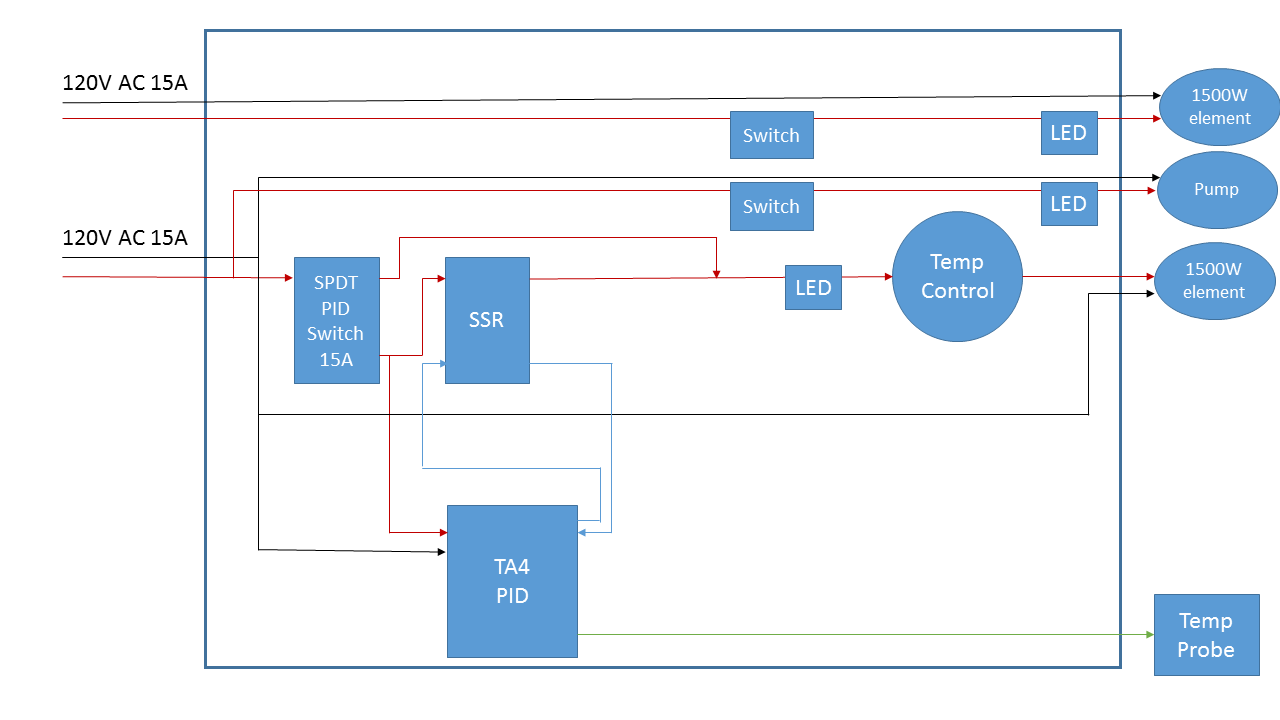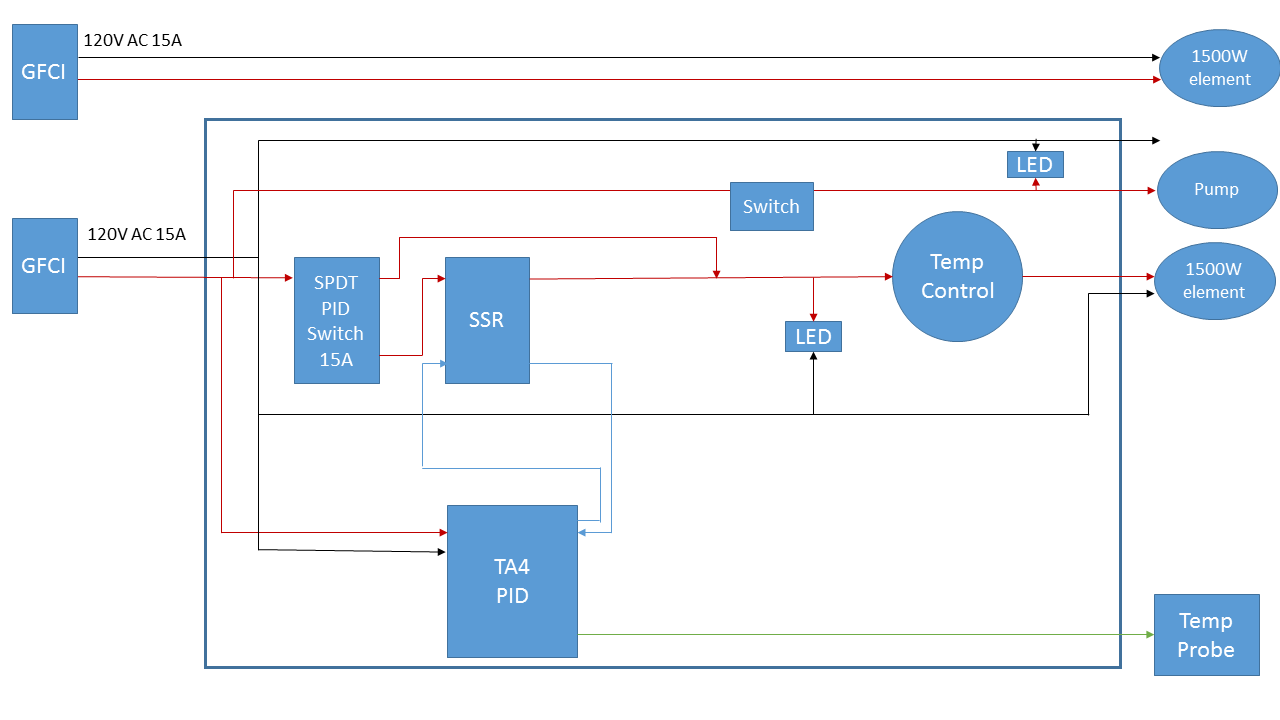flexmurphy
Member
- Joined
- May 15, 2014
- Messages
- 10
- Reaction score
- 3
I'm sure there's already a post addressing this, but I haven't been able to find it.
I'm designing an electric brewing controller with the following characteristics:
- Dual 120V 1500W heating elements
- Pump control
- Element 1 is straight on/off at full power
- Element 2 is able to switch from PID/SSR temperature control to manual on using a three-position on/off/on SPDT switch
- In either PID or manual mode, Element 2 also has a manual temperature control dial to adjust heat output
- LED indicator lights on all three loads (Element 1, Element 2, Pump)
I've attached a diagram illustrating how I imagine this working - if there's anyone who feels like taking a look and letting me know if it makes sense, it would be much appreciated.
Thanks!

I'm designing an electric brewing controller with the following characteristics:
- Dual 120V 1500W heating elements
- Pump control
- Element 1 is straight on/off at full power
- Element 2 is able to switch from PID/SSR temperature control to manual on using a three-position on/off/on SPDT switch
- In either PID or manual mode, Element 2 also has a manual temperature control dial to adjust heat output
- LED indicator lights on all three loads (Element 1, Element 2, Pump)
I've attached a diagram illustrating how I imagine this working - if there's anyone who feels like taking a look and letting me know if it makes sense, it would be much appreciated.
Thanks!





